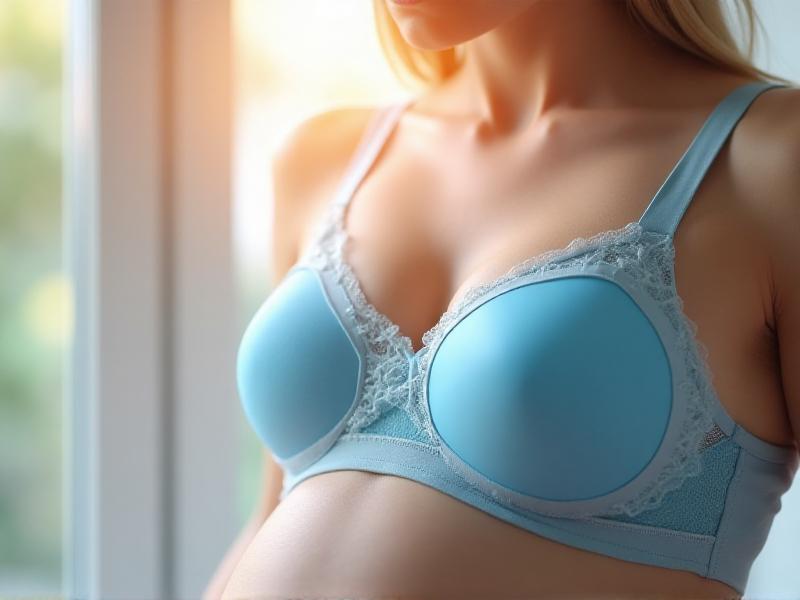Cold Therapy Inserts for Engorgement Relief
Understanding Breast Engorgement: Causes and Symptoms
Breast engorgement is a common condition experienced by many new mothers, particularly in the early stages of breastfeeding. It occurs when the breasts become overly full of milk, leading to discomfort, swelling, and sometimes even pain. This condition can make breastfeeding challenging and may even lead to complications such as mastitis if not managed properly. Understanding the causes and symptoms of breast engorgement is the first step toward finding effective relief.
One of the primary causes of breast engorgement is the sudden increase in milk production that occurs after childbirth. The body begins producing milk in response to hormonal changes, and if the baby is not feeding frequently enough, the milk can accumulate in the breasts. Other factors that can contribute to engorgement include missed feedings, improper latching, or weaning too quickly. Recognizing the symptoms early on can help mothers take proactive measures to alleviate discomfort.
The Science Behind Cold Therapy for Engorgement Relief
Cold therapy has long been recognized as an effective method for reducing inflammation and providing relief from pain. When it comes to breast engorgement, applying cold therapy can help constrict blood vessels, reduce swelling, and numb the area, providing immediate comfort. The science behind this method lies in its ability to slow down the flow of blood and lymph fluid to the affected area, thereby reducing the pressure and discomfort associated with engorgement.
Cold therapy inserts, specifically designed for breast engorgement, are a convenient and targeted way to apply this treatment. These inserts are often made from gel materials that can be chilled in the refrigerator or freezer and then placed inside a nursing bra. The cold temperature helps to soothe the breasts without causing any harm to the milk ducts. Understanding how cold therapy works can empower mothers to use this method effectively and safely.

Types of Cold Therapy Inserts: A Comprehensive Guide
When it comes to choosing cold therapy inserts for breast engorgement relief, there are several options available on the market. Each type of insert offers unique features and benefits, making it important to select the one that best suits your needs. Gel inserts are among the most popular, as they can be easily chilled and provide consistent cooling. These inserts are often reusable and come in various shapes and sizes to fit different breast shapes.
Another option is cold packs specifically designed for breastfeeding mothers. These packs are usually filled with a cooling gel or liquid and can be wrapped around the breasts for targeted relief. Some cold packs are even designed to be worn inside a nursing bra, offering hands-free convenience. Additionally, there are disposable cold therapy pads that can be used once and then discarded, making them a convenient option for on-the-go relief. Understanding the different types of cold therapy inserts can help you make an informed decision.

How to Use Cold Therapy Inserts Safely and Effectively
Using cold therapy inserts for breast engorgement relief is relatively straightforward, but it's important to follow some guidelines to ensure safety and effectiveness. First, always read the manufacturer's instructions before using any cold therapy product. Most inserts need to be chilled in the refrigerator or freezer for a specific amount of time before use. Avoid over-chilling the inserts, as extreme cold can cause skin irritation or damage to the milk ducts.
When applying the inserts, make sure they are wrapped in a thin cloth or placed inside a nursing bra to prevent direct contact with the skin. This will help avoid any potential discomfort or frostbite. It's also important to limit the duration of cold therapy sessions to 15-20 minutes at a time, allowing the skin to return to its normal temperature between applications. By following these safety tips, you can maximize the benefits of cold therapy while minimizing any risks.

Combining Cold Therapy with Other Relief Methods
While cold therapy inserts can provide significant relief from breast engorgement, combining them with other methods can enhance their effectiveness. One such method is warm compresses, which can be applied before breastfeeding to help stimulate milk flow and reduce the risk of clogged ducts. Alternating between warm compresses and cold therapy inserts can provide a balanced approach to managing engorgement.
Another effective combination is using cold therapy inserts along with gentle breast massage. Massaging the breasts can help to move the milk through the ducts and reduce the pressure caused by engorgement. Additionally, ensuring proper latching and frequent breastfeeding can help to prevent engorgement from occurring in the first place. By integrating multiple relief methods, mothers can find a comprehensive approach to managing breast engorgement.
Real-Life Testimonials: Success Stories with Cold Therapy Inserts
Hearing from other mothers who have successfully used cold therapy inserts for breast engorgement relief can be incredibly reassuring. Many women have shared their positive experiences, noting how the inserts provided immediate comfort and helped them continue breastfeeding without pain. One mother recounted how she used cold therapy inserts after every feeding session and noticed a significant reduction in swelling within just a few days.
Another mother shared how she combined cold therapy inserts with warm compresses and breast massage, finding that this multi-faceted approach worked best for her. These real-life testimonials highlight the versatility and effectiveness of cold therapy inserts, offering hope and encouragement to other mothers facing similar challenges. By learning from the experiences of others, you can gain valuable insights and tips for using cold therapy inserts effectively.
FAQs About Cold Therapy Inserts for Engorgement Relief
Many mothers have questions about using cold therapy inserts for breast engorgement relief, and addressing these FAQs can provide clarity and confidence. One common question is whether cold therapy can affect milk supply. The answer is that cold therapy does not reduce milk supply; it simply helps to alleviate the discomfort associated with engorgement. Another frequently asked question is how often cold therapy inserts should be used. It's generally recommended to use them as needed, but not for more than 20 minutes at a time.
Mothers also often wonder if cold therapy inserts are safe to use while breastfeeding. The answer is yes, as long as they are used correctly and not applied directly to the skin. By addressing these common questions, mothers can feel more informed and comfortable using cold therapy inserts as part of their engorgement relief strategy.
Choosing the Right Cold Therapy Inserts for Your Needs
With so many options available, choosing the right cold therapy inserts for breast engorgement relief can feel overwhelming. It's important to consider factors such as the material, size, and ease of use when making your decision. Gel inserts are a popular choice due to their flexibility and ability to conform to the shape of the breasts. However, if you prefer a disposable option, cold therapy pads may be more convenient.
Another consideration is the duration of cooling provided by the inserts. Some products offer longer-lasting cooling effects, which can be beneficial for extended relief. Additionally, look for inserts that are easy to clean and maintain, especially if you plan to use them multiple times. By taking these factors into account, you can choose the cold therapy inserts that best meet your needs and provide the most effective relief.
Maintaining and Caring for Your Cold Therapy Inserts
Proper maintenance and care of your cold therapy inserts can extend their lifespan and ensure they remain effective for future use. Most gel inserts can be cleaned with a mild soap and water solution, followed by thorough drying before storage. It's important to avoid using harsh chemicals or abrasive materials that could damage the inserts. For reusable cold packs, always follow the manufacturer's cleaning instructions to maintain their integrity.
Storing your cold therapy inserts in a cool, dry place can also help preserve their quality. Avoid exposing them to extreme temperatures or direct sunlight, as this can affect their performance. By taking the time to care for your cold therapy inserts, you can ensure they continue to provide reliable relief whenever you need it.







